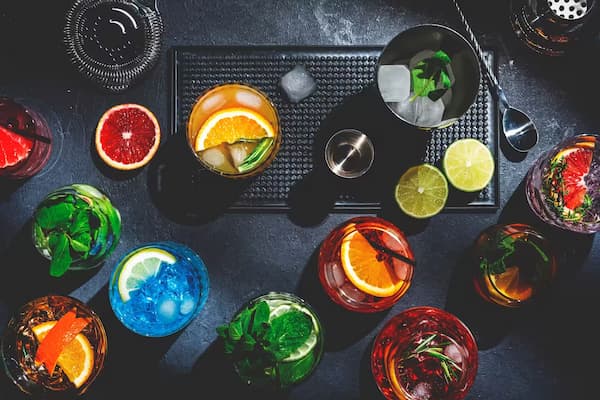Grain Alcohol
With Grain Alcohol you can make
We've got 8 cocktails that can be made with Grain Alcohol.
Find out what to make with Grain Alcohol
Q&A
What is the history of grain alcohol in cocktails?
Grain alcohol has a deep-rooted history in the world of spirits and cocktails. Its origins can be traced back to the early practices of distillation in Europe and the Middle East, where it was initially used for medicinal purposes. Over time, its application evolved, and by the 15th and 16th centuries, grain alcohol began to gain popularity as a base for various alcoholic beverages due to its high alcohol content and neutral flavor. In the United States, the production and consumption of grain alcohol surged during Prohibition, as it became a key ingredient in illicitly produced spirits and homemade concoctions. Today, grain alcohol is celebrated in mixology for its versatility and ability to create a wide range of cocktails, from simple mixed drinks to complex infusions and liqueurs.
Why is grain alcohol considered a neutral spirit?
Grain alcohol is considered a neutral spirit because it has a highly purified form with a very minimal flavor profile. It's made through a process of fermentation and multiple distillations, which effectively remove impurities and flavors associated with the original grains used in its production. This results in a clear, colorless liquid that carries little to no taste of its own, making it the perfect base for cocktails where the flavors of other ingredients are meant to shine. The neutrality of grain alcohol also makes it ideal for creating infusions and homemade liqueurs, as it can extract flavors from added ingredients without imparting any additional taste.
How do you safely dilute grain alcohol for use in cocktails?
Diluting grain alcohol is crucial for creating enjoyable and safe cocktails, due to its high alcohol content. To dilute it safely, start by deciding the desired strength of your final cocktail or infusion. Use water or another non-alcoholic base liquid to reduce the alcohol by volume (ABV) to a manageable level, typically around 20-40% for infused spirits and even lower for direct cocktail mixing. It's essential to measure accurately using a jigger or measuring tool and to mix thoroughly to ensure even dilution. Always taste your mixture as you go, adjusting the dilution to achieve the desired balance and flavor profile without overwhelming the drink with alcohol.
Is grain alcohol gluten-free despite being made from grains?
Yes, grain alcohol is considered gluten-free by many experts, despite being made from grains like wheat, barley, or rye, which contain gluten. The distillation process effectively removes gluten proteins by separating the alcohol from the fermented grain mixture. The resulting distilled alcohol is a pure form of ethanol, free from gluten contaminants. However, individuals with celiac disease or severe gluten sensitivities are often advised to exercise caution and consult with healthcare professionals before consumption, as some may still react to trace remnants or to products that have been contaminated post-distillation.
What are some classic cocktails that use grain alcohol as a key ingredient?
While grain alcohol is often used for infusions and homemade liqueurs, it can also be a key component in several classic and potent cocktails. One popular example is the 'Jungle Juice,' a large-batch party drink that mixes grain alcohol with a variety of fruit juices and slices for a refreshing and strong beverage. Another is the 'Long Island Iced Tea,' which despite its name, contains no tea but combines grain alcohol with tequila, rum, vodka, gin, and a splash of cola for a powerful mix. Due to its neutral flavor and high proof, grain alcohol can be used judiciously in many recipes where a strong, unadulterated alcohol base is desired. Remember, the high alcohol content means these cocktails should be consumed responsibly.
Ingredients like Grain Alcohol
Other Specialities
How it works
Easily create your bar from the ingredients you have at home, and we'll show you what you can make with the ingredients you have to hand.
Once you've added this ingredient head to your My bar page and fill up everything else you have.
We'll also show you cocktails that can make by substituting what you have for one of the ingredients you don't, riffing on the original. Now go forth and create something delicious!




















